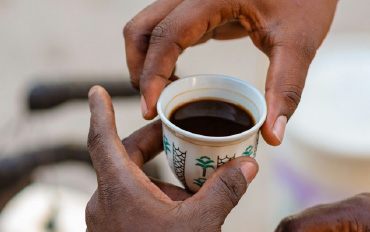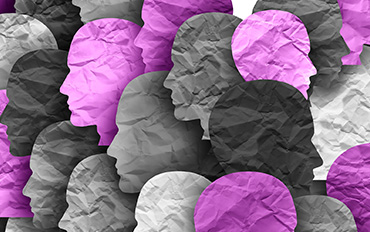You arrive uninvited and begin to tally every crisis, stacking them up as evidence that our efforts are futile, certainly too small. You loudly proclaim: “These problems are too big and your resources are too few to change all the pain and suffering of the world. What in the world were you thinking? Oh, my mistake. You weren’t. That’s why I need to be here with you.”
Most mornings, you are right there, at the crack of dawn, convinced you need to accompany me as I start my day. You breathe down my neck and make a loud sigh each time you can tell I am reading about new executive orders, political impositions, and the latest global and national disasters that confirm that the world is reeling at the edges of its own making. You think I am naïve. You laugh at me for believing that no single act of courage is too small to matter.
You continue to borrow lines from old scripts. When traveling through time looking for blueprints in the historical moments where people turned grief into public disobedience, you smirk, claiming those victories are just footnotes, already redundant and forgotten.
It’s clear that you want me to believe one story only, but I know it’s not the full story. Let’s be honest, your business model depends on isolation, withdrawal, and exhaustion. You thrive when we forget that we belong to the collective, not to you. You want us to keep our eyes on the people in the political stage lights, so that we will ignore all the ways that people are reaching out to others and becoming closer to their communities. You want us to dismiss an unexpected call from a long-time friend to start informal meet-ups; you want us to pooh-pooh people organizing grassroots, peaceful demonstrations across the nation; and you want us to ignore therapists pooling resources for those who have been affected by ICE raids. When we insist that each of these actions strengthen solidarity, you say, “Get a grip. There is no such thing as collective spirit.”
We have been talking to each other, and we are now clear about your tactics. We see that you can’t stand it when we gather together. When we do, you get even louder, insisting that the ledger favors despair. We strongly disagree. Every small act of resistance compounds the interest of courage. Every small act done with others builds momentum. So, stay if you insist, but understand we will keep moving forward, transforming our private grief and rage into collective solidarity.
We move with clarity, choosing connecting voices over your solo monologue. We know the status quo would love nothing more than for all of us to be distraught, but we are not going to oblige. Listen up: our fighting spirit is unafraid to work with fragments and to create hope where it seems unlikely to be found.
In collective clarity and still connected …
The playbook of Hopelessness, annotated
Before we attempt to lay out one of the oldest playbooks in the world, we invite you into a brief exploration to notice how Hopelessness thrives when it takes you over. Observe when it arrives and how it registers in your body. Where does your physiological response take place? Might it be a dull ache, like an oncoming migraine behind the eye? Other times, might it arrive just before sleep, with a heaviness in the chest? Does it enter like shock, disbelief, or fear? Does it render you motionless and/or confused? Do you notice any repeating phrases? It chants: “Nothing will change.” “You are on your own.” “Only perfect action counts.”
Hopelessness is a creature of habit. It feeds on essential moves that show up again and again.
From this place, we believe it can be helpful to study and become more familiar with the recurring moves that help Hopelessness thrive. We think that discerning Hopelessness’ playbook can generate counter-practices that will invite us to step out of its isolating tactics. We think that by analyzing Hopelessness’ moves, we can better see how part of the strategy is to make us think that our collective experience is actually ours alone. Hopelessness is a creature of habit. It feeds on essential moves that show up again and again. The sections that follow take up four such moves. There may be others. We would love to hear from you if you are onto others we are not naming here.
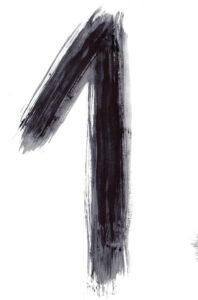 Forgetting that this is not the first time or place authoritarianism has happened
Forgetting that this is not the first time or place authoritarianism has happened
Many people in many countries have faced similar, if not identical, situations to our current one. Sadly, there are many places and periods to gather insight about what has happened and what has helped or even turned a repressive situation around. Lindsey Stonebridge, an English scholar who has been studying the effects of violence on our thinking in both the 20th and 21st centuries, has recently published a book on Hannah Arendt, We Are Free to Change the World: Hannah Arendt’s Lessons in Love and Disobedience. The book is an intellectual biography, showing how one woman in dialogue with friends and colleagues came to understand the central issues of living in and resisting totalitarian regimes. Stonebridge not only helps us understand Arendt’s thinking but also helps us understand what forces are vying to dominate our own thinking in our times, not just in the United States, but globally. Hopelessness is one of those forces, and Arendt contended with it mightily. “It is when the experience of powerlessness is at its most acute, when history seems at its most bleak, that the determination to think like a human being, creatively, courageously, matters the most” (Stonebridge, 2024, p.5). In other words, when we are invited to treat despair solely as a symptom to be managed, we overlook the opportunity to transform private anguish into collective solidarity. Arendt (1958) refers to this process as the space of appearance: A relational arena where people step out of private isolation and seek to be seen by one another, in mutual and generative visibility. It is clear to us, and it has been clear to many thinkers over time, that hopelessness wants us to feel alone, or if not alone, wants us to feel overwhelmed.
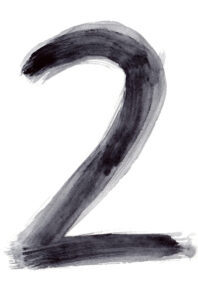 Setting the activism bar too idealistically
Setting the activism bar too idealistically
Another trick hopelessness uses is to make it seem that there is only one way to be an activist. This particular trick contributes to feeling overwhelmed. Hopelessness thrives where there is a kind of purity test, that is, only the right kind and amount of activism matters. Sadly, it may be within the activist community itself that inordinate standards are set, sometimes by shaming. When activists, or people who want to “do activism,” are subjected to the idea that there is only one right way to be an activist, as opposed to activism being always a “do what you can” activity, people can get discouraged, even hopeless. It is no accident that women are often the ones who are judged, and judge themselves, as coming up short as activists. Emily Craddock, who studies social justice activist communities, writes: “Participants feel that they do not qualify as activists because they do not do ‘enough’ activism or because they ‘only’ do online activism, reflecting the criteria of the ‘right’ type and level of activism. Significantly, this judgement comes from within the activist community. This positive perception of the activist feeds into notions about the ideal and perfect activist, who tirelessly works for the causes they believe in and fully commits their whole selves to doing activism. While this particular version of the activist receives high praise from participants, it also acts as a marker of the perceived standard required to claim the activist identity. By comparing themselves to this marker, participants reveal anxiety about whether they are ‘doing enough’ to be deemed a ‘real’ activist. Therefore, such conceptions about the ‘right’ level of activism required to be an activist often act as a barrier to doing activism. Moreover, the key question arises of how much would be enough (Craddock, 2017, p. 251). Craddock goes on to suggest that it is women in particular, whose lives are more often than those of their male peers taken up with caretaking responsibilities, who feel inadequate, leading to guilt and anxiety. These emotions decrease enthusiasm for activism and support hopelessness.
We are on to this trick and intend to expose it in as many ways as we can. We want to call out the feeling of “I’m not doing enough,” and help those of us who experience it—as we do—to convert that feeling into “I’m doing what I can.” Doing what we can is not the same as doing enough, an impossible standard in most situations. Doing what I can is almost always attainable.
 Using unrealistic ideas about hope
Using unrealistic ideas about hope
If standards of activism dampen people’s enthusiasm for it, so too do many ideas about hope. When hope is conceived as a feeling, which one either possesses or is deficient in, this too can drive hopelessness. This framing reinforces the logic of hopelessness: that if we do not feel hopeful, we are deemed a personal failure. Weingarten (2010) challenges this notion by offering an alternative framework: reasonable hope. Reasonable hope is unlike rainbow hope, the kind of pie-in-the-sky hope where one indulges in wishful thinking in anticipation of a preferred future with little effort expended to make what one wants to happen in the here and now. Reasonable hope is precisely about working toward what one wants to realize in the here and now and doing so with others. Rather than thinking of hope as a feeling or a wish, reasonable hope acts to keep multiple futures possible.
To bring about and sustain reasonable hope, people must collaborate with each other. This is precisely what can be so difficult when hopelessness has taken hold, convincing us that we have nothing to offer a collaborative effort. Further, hopelessness has a way of making us feel that small efforts, if they do not solve the issue at hand, are worthless. It’s extremely important to see through this distortion by internalizing the difference between something small and something trivial. There are always ripple effects from even the smallest action, ones whose reach may be far beyond what we will ever know. To hope reasonably is not to deny what is challenging, but to insist on staying engaged.
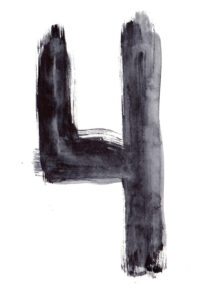 Going it alone: Not leaning on others
Going it alone: Not leaning on others
Sometimes we need to draw inspiration vicariously. In a 2007 article, Hernandez, Gangsei, and Engstrom wrote about therapists drawing inspiration from the courageous actions of their clients who had experienced trauma. They wrote that while vicarious trauma certainly occurs, less noted but also significant is vicarious resilience, the ability of therapists to appreciate the courage and survival practices of their clients—their resilience—such that this appreciation becomes an inspiration and spur to their own personal growth and transformation. Inspired by their work, we note that it is also possible to experience vicarious hope. It’s unlikely that all of us will always simultaneously be captured by hopelessness. Hopelessness is good but not perfect, as it were. Some of us will be resisting hopelessness, and we can then lean on each other, enjoying vicarious hope. This is one of the great things that comes from being in community.
All of the practices we have suggested that resist hopelessness, acknowledging it but moving it to a non-dominant position in our lives, rest on a positive view of being in community. We conceive of community as the best place for the purpose of collective knowledge building, collective understanding, collective practices of compassionate care, collective resilience, collective resistance, and collective dissent.
Authoritarians also use the collective, but they do so with a very different purpose in mind. They use the collective to form a group identity that dampens individual differences and gives people a sense of superiority. Groupthink is the goal; the language, or slogans, that people use is always the same. This is in sharp contrast to the way we are using community. Hannah Arendt is one of the pre-eminent scholars of the 20th century, who, having lived through two world wars, knew the importance of collective, communal action to mount resistance. In her view, totalitarian regimes manipulate individuals to feel lonely and hopeless, creating the conditions for them to withdraw from public life and feel inadequate. This same process, then, isolation, makes them vulnerable to manipulation, like that of authoritarian propaganda.
Arendt (1958) conceived of power as something that happens when individuals act together: “Power corresponds to the human ability not just to act but to act in concert … [power] belongs to a group and remains in existence only so long as the group keeps together.” This collective nature of power is central to her vision of resistance: only in community, through shared judgment and coordinated action, can people oppose the forces that seek to dominate them.
Many feminist thinkers have agreed on this very same point, highlighting that group thinking demands sameness rather than engaging with difference. hooks (1994), for example, names “narcissism of sameness” within political movements as the force used to suppress the transformative potential of dissenting voices. While community, as we define it, is a space for plural thinking and mutual accountability, authoritarian collectives demand sameness, collapsing difference into a single sanctioned worldview. In such environments, groupthink is not merely agreement; it is the life force that tries to convince each of us that safety can be found in silence and isolation.
We are history in the making
Let us be clear: Hopelessness may linger, but we strongly believe it is no match for collective solidarity. Arendt (1958) highlights that loneliness and isolation are not just emotional states but the preconditions for totalitarianism. In totalitarian systems, community and relational care are anathema to total control. Hopelessness, wittingly or unwittingly, participates in those practices of control. We can counter with strong and intentional refusals to be isolated from each other. We can remain relational, we can stay in connection, we can choose each other again and again.
Arendt (1973) argued that the logic of isolation is to uproot individuals from a shared worldview. This insight is an important reminder that domination is not only physical force but also relational force that pits people against one another and sunders meaningful connections. Domination depends on people no longer feeling safe to speak or appear together. That is precisely what hopelessness aims to reproduce on a psychological scale: A withdrawal from meaning, from others, from the world.
In a world overwhelmed by fear and disconnection, we encourage people to remain close to their values and to each other. In the midst of current uncertainties, there can still be what Arendt called ‘amor mundi,’ which means love of the world, not as it should be, but as it is: unfinished, fractured, and still ours to tend (Arendt, 1973). With this in mind, despair can be transformed, with language, with memory, and with our most stubborn presence.
We carry forward moments of connection that exist not in spite of hopelessness, but because we’ve studied its tactics and have chosen, together, not to be recruited.
We write to caution that despair is not neutral. We ask: Who benefits the most from hopelessness and despair? If we are clear at the moment, we acknowledge that our clarity derives from those who came before us and refused to let ideology be a substitute for their own thinking. Hopelessness would have us believe that nothing we do matters; that history is already written. Instead, we invite each other to reclaim our place in the world as thinking, acting, relational beings. In doing so, we carry forward moments of connection that exist not in spite of hopelessness, but because we’ve studied its tactics and have chosen, together, not to be recruited.

Danna Abraham, PhD, LMFT, is originally from Brazil and works as an assistant professor at the California School of Professional Psychology at Alliant International University. She is an AAMFT Professional member holding the Approved Supervisor and Clinical Fellow designations. In her work, she focuses on community-based research and feminist approaches to critical engagement, with a particular focus on language and lived experiences. She is the director of the Research Initiative for Storytelling Engagement (RISE) Lab, where she explores the power of storytelling as a method for challenging dominant narratives for generative community-informed knowledge. www.theriselab.com, dayanne.abraham@alliant.edu

Kaethe Weingarten, PhD, founded and is now an advisor to the Witness to Witness (W2W) Program for Migrant Clinicians Network. The goal of W2W is to help the helpers, primarily serving healthcare workers who work with historically marginalized communities. She worked at Harvard Medical School (1981-2017), where she was an Associate Clinical Professor of Psychology and at the Family Institute of Cambridge (1982-2009). She founded and directed the Program in Families, Trauma and Resilience at the Family Institute of Cambridge. Internationally, she has taught in Africa, Australia, Canada, Europe, and New Zealand, where she was a Fulbright Specialist. She has written about her work in six books (which she has authored or edited) and over 200 articles, chapters, and essays. Dr. Weingarten’s work focuses on the development and dissemination of a witnessing model. One prong of the work is about the effects of witnessing trauma in the context of domestic, inter-ethnic, racial, political, and other forms of conflict. The other prong of the witnessing work is in the context of healthcare, illness, and disability. Her work on reasonable hope has been widely cited.
Arendt, H. (1958). The human condition. University of Chicago Press.
Arendt, H. (1973). The origins of totalitarianism (New ed.). Harcourt Brace Jovanovich.
Craddock, E. (2017). Emotion and gender in local anti-austerity activist cultures [Doctoral dissertation, University of Nottingham]. Nottingham ePrints. https://eprints.nottingham.ac.uk/40848/1/Emotion%20and%20Gender%20Craddock.pdf
Hernandez, P., Gangsei, D., & Engstrom, D. (2007). Vicarious resilience: A new concept in work with those who survive trauma. Family Process, 46(2), 229–241. https://doi.org/10.1111/j.1545-5300.2007.00206.x
Hooks, b. (1994). Teaching to transgress: Education as the practice of freedom. Routledge.
Hope, S. (2014, December 8). The capitalist model of activism and why it sucks. A Feminist Challenging Transphobia. Retrieved 29/01/2015 https://feministchallengingtransphobia.wordpress.com/2014/12/08/the-capitalist-model-of-activism-and-why-it-sucks/
Stonebridge, L. (2024). We are free to change the world: Hannah Arendt’s lessons in love and disobedience. Hogarth.
Solnit, R. (2005) Hope in the Dark: The Untold History of People Power. Edinburgh: Cannongate Books.
Other articles
The Myopia of the DSM
To name something—to separate it from the rest of existence—and label it, is a foundational act. It is the beginning of understanding and control. In Genesis, the first thing God did in splitting light from darkness was to call the day light and the darkness night. Then, let loose in the Garden of Eden, Adam set out naming God’s creatures. In many ways, it could be said that Adam was humanity’s first label maker (Singh, 2024).
H. Charles Fishman, MD & Misti Sparks, PhD
Therapy, the Buna Ceremony, and Elders: Lessons from Ethiopia
As an Ethiopian, I know how deeply our lives are shaped by religion, tradition, and collectivism. In our culture, it is not natural to share intimate details with an outsider, especially about family struggles. The idea of vulnerability with a stranger feels unsettling. And yet, I also know that Ethiopians already engage in practices that look remarkably similar to what therapy provides—listening, validation, guidance, and healing.
Bethelheim Haileyesus
This Is What Happens When Therapists Don’t Understand Asexuality
The problem my husband and I had was, admittedly, a tricky one. I had always been disinterested in sex ever since my high school years—it didn’t make sense to me, I had no need for it, and I never enjoyed it—but, 9 years into our marriage, that disinterest had developed into a deep repulsion. After some sleuthing on the internet which led me to the Asexuality and Visibility Education Network (AVEN), I figured out I was asexual.
Debbie Urbanski


